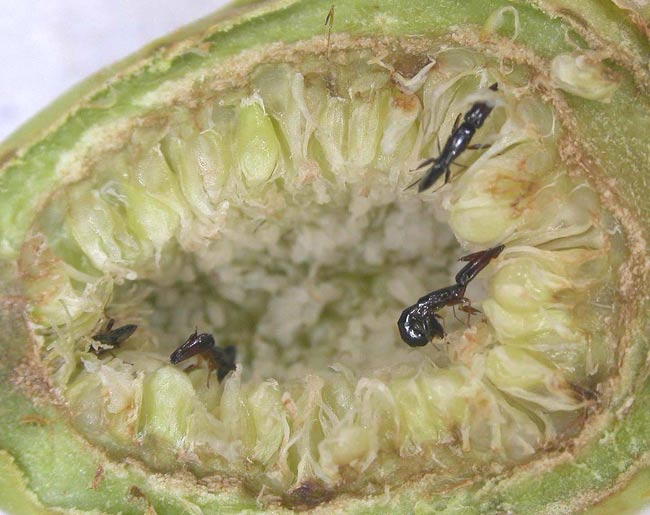The Good Thing About Parasites

By causing harm, parasites can sometimes ironically help the species they afflict. Scientists investigated pollinator wasps (Pleistodontes imperialis) and an Australian species of fig (Ficus rubiginosa). The wasps and figs are mutualistic — they cooperate, with each profiting from benefits supplied by the other partner. The relationship between the wasps and figs — which has lasted more than 60 million years — involves female wasps entering figs and pollinating tiny flowers within. The pollinators then lay their eggs into the blossoms, and each wasp offspring feeds off the seed that develops in the flower it hatched in. Another character One mystery scientists face when it comes to mutualism is how it remains stable. What prevents one partner from exploiting the relationship too much? For instance, the wasps might easily overwhelm the figs with offspring that devour all the seeds. "Mutualisms are very pervasive in nature but have proved harder to understand than other interactions between species," said researcher James Cook, an evolutionary ecologist at the University of Reading in England. It turns out another species of parasitic wasp, once thought detrimental to the mutualistic wasps and figs, may actually help keep their cooperative relationship stable, preventing the wasps from taking advantage of the figs. The researchers looked at small fig trees that typically grow on large boulders on rocky hillsides in Australia, so researcher Derek Dunn, who did most of the field work, "had to become something of a mountain goat to get his samples," Cook recalled. The pollinators lay eggs in flowers near the center of the fruit. The scientists found out the pollinators avoid blossoms near the outer wall because their offspring are at high risk of attack there from different species of parasitic wasps. This leaves the fig trees free to develop seeds from the outer flowers. Three's company The parasitic wasps have generally been thought to have a negative impact on the cooperative relationship between the pollinator wasps and the fig trees — "after all, they kill the pollinating wasps," Cook said. "What we have shown is that they actually contribute towards stabilizing the mutualism in the long term by placing pressure on the pollinating wasps to leave a subset of flowers to develop as seeds." Mutualisms actually often get exploited by parasites, "but we now have to ask how often parasites actually play important roles in stabilizing mutualisms in general," Cook told LiveScience. Three may not always be a crowd. "We need to think of mutualisms as being embedded in — and sometimes reliant upon — a wider network of species interactions." Dunn, Cook and their colleagues detailed their findings March 10 online in the journal PLoS Biology.
- Video: Wasps Trained to be Hounds
- Top 10 Secret Insect Weapons
- Backyard Bugs: The Best of Your Images
Get the world’s most fascinating discoveries delivered straight to your inbox.

 Live Science Plus
Live Science Plus





